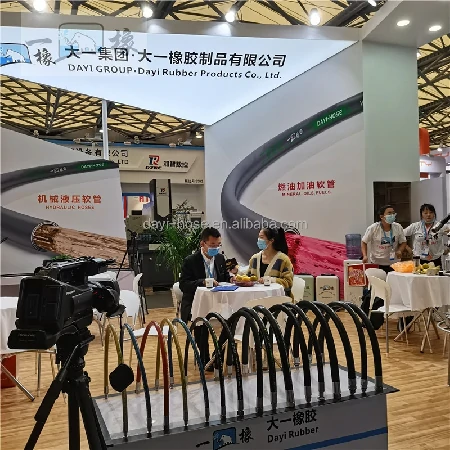12 月 . 04, 2024 16:37 Back to list
oem hydraulic hose fitting
Understanding OEM Hydraulic Hose Fittings A Key Component in Fluid Power Systems
In the realm of hydraulic systems, the significance of hydraulic hose fittings cannot be overstated. They serve as the critical junctions where hydraulic hoses connect with various components, thus facilitating the transfer of hydraulic fluid under pressure. Among the many types of fittings available, Original Equipment Manufacturer (OEM) hydraulic hose fittings are particularly important for ensuring optimal compatibility and performance in hydraulic applications.
What are OEM Hydraulic Hose Fittings?
OEM hydraulic hose fittings are fittings that are manufactured by the original equipment manufacturer. These fittings are specifically designed to be used with hoses and equipment produced by the same manufacturer, ensuring a perfect fit and reliable performance. By using OEM fittings, operators and engineers can be assured of the quality, durability, and compatibility of the components in their hydraulic systems.
Advantages of Using OEM Hydraulic Hose Fittings
1. Precision Engineering OEM fittings are engineered to exact specifications. This precision ensures that they will fit perfectly with the hoses and equipment they are designed for, minimizing the risk of leaks and failures. The exact fit also ensures optimal flow and pressure within the hydraulic system, which is vital for its performance.
2. Durability and Reliability OEM fittings are typically made from high-quality materials that withstand the harsh conditions typically found in hydraulic applications. They are built to resist corrosion, wear and tear, and extreme temperatures. This durability leads to a longer service life, reducing maintenance costs and downtime for repairs.
3. Guaranteed Compatibility Using OEM fittings guarantees that all components of a hydraulic system work well together. Many aftermarket fittings may seem compatible, but slight differences in design or material can lead to system failures over time. By choosing OEM fittings, users can rest assured that they meet the manufacturer’s standards and specifications.
4. Enhanced Performance The combination of precision fit, quality materials, and compatibility leads to enhanced overall performance of the hydraulic system. OEM fittings help maintain optimal fluid flow and pressure, contributing to the efficient operation and longevity of the equipment.
5. Safety In hydraulic systems, safety is a primary concern. A failure in a fitting can lead to catastrophic results, including equipment damage or even injury to personnel. OEM hydraulic hose fittings undergo rigorous testing to meet industry safety standards, providing peace of mind to operators.
oem hydraulic hose fitting

Applications of OEM Hydraulic Hose Fittings
OEM hydraulic hose fittings are used across a wide range of industries, including manufacturing, construction, agriculture, and automotive. These fittings are commonly utilized in hydraulic presses, excavators, forklifts, tractors, and various other hydraulic machinery. Their ability to provide reliable and efficient connections plays a vital role in keeping these machines operational and safe.
Choosing the Right OEM Hydraulic Hose Fittings
When selecting OEM hydraulic hose fittings, it is crucial to consider several factors
1. Manufacturer Specifications Always refer to the equipment manufacturer’s specifications for the correct fitting type, size, and material.
2. Application Requirements Different applications may require different types of fittings based on pressure ratings, fluid type, and environmental conditions.
3. Installation and Maintenance Assess the ease of installation and the maintenance needs of the fittings. While OEM fittings are designed for compatibility, proper installation is still essential to prevent issues.
Conclusion
OEM hydraulic hose fittings play a crucial role in the efficiency and safety of hydraulic systems. By choosing OEM components, users can ensure that their systems operate at peak performance, reducing the likelihood of failures and extending the life of the equipment. As industries continue to rely heavily on hydraulic technology, understanding and selecting the right fittings will remain vital for anyone involved in the maintenance and operation of hydraulic systems. Choosing OEM is not just about brand loyalty; it is about investing in quality and reliability, which in turn leads to operational excellence.
-
EN857 2SC Hydraulic Hose Suppliers OEM & China Manufacturers
NewsMay.30,2025
-
51mm Hydraulic Hose Manufacturer China OEM Durable & Custom Solutions
NewsMay.30,2025
-
OEM Rubber Air Hose Supplier Durable Custom Solutions
NewsMay.29,2025
-
High-Pressure Wrapped Cover Steel Wire Spiral Hydraulic Hose Supplier
NewsMay.29,2025
-
Rubber water suction and discharge hose
NewsMar.07,2025
-
SAE 100 R6/EN 854 R6 Fibre Braided Oil Hose
NewsMar.07,2025



